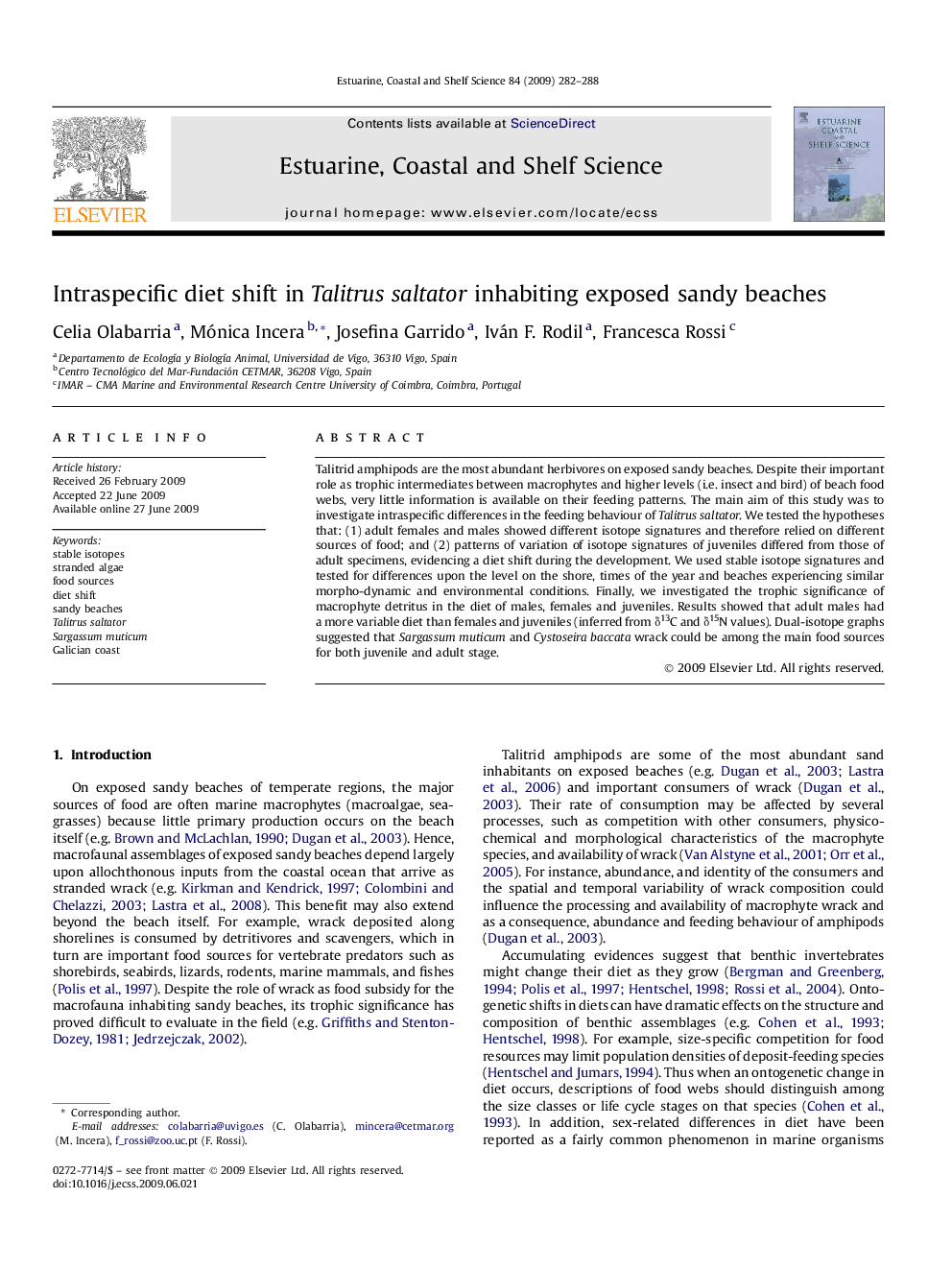| Article ID | Journal | Published Year | Pages | File Type |
|---|---|---|---|---|
| 4541265 | Estuarine, Coastal and Shelf Science | 2009 | 7 Pages |
Talitrid amphipods are the most abundant herbivores on exposed sandy beaches. Despite their important role as trophic intermediates between macrophytes and higher levels (i.e. insect and bird) of beach food webs, very little information is available on their feeding patterns. The main aim of this study was to investigate intraspecific differences in the feeding behaviour of Talitrus saltator. We tested the hypotheses that: (1) adult females and males showed different isotope signatures and therefore relied on different sources of food; and (2) patterns of variation of isotope signatures of juveniles differed from those of adult specimens, evidencing a diet shift during the development. We used stable isotope signatures and tested for differences upon the level on the shore, times of the year and beaches experiencing similar morpho-dynamic and environmental conditions. Finally, we investigated the trophic significance of macrophyte detritus in the diet of males, females and juveniles. Results showed that adult males had a more variable diet than females and juveniles (inferred from δ13C and δ15N values). Dual-isotope graphs suggested that Sargassum muticum and Cystoseira baccata wrack could be among the main food sources for both juvenile and adult stage.
